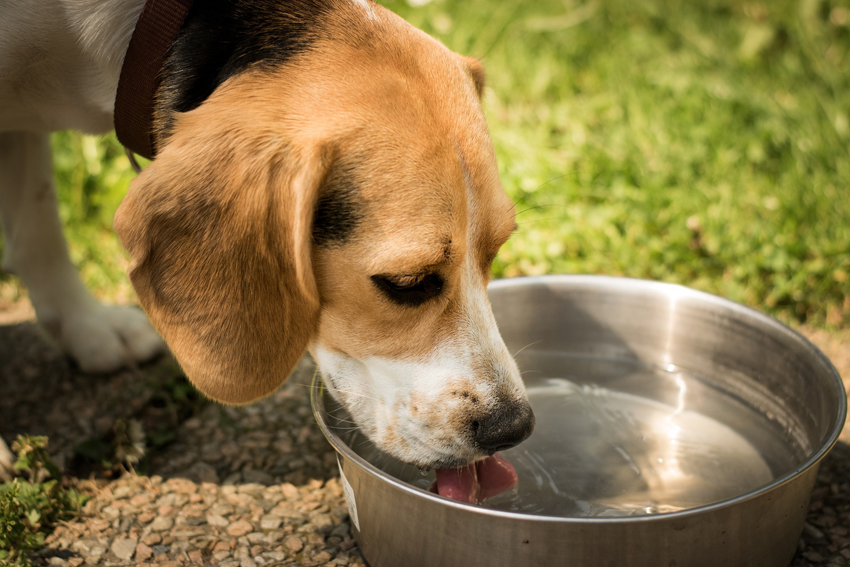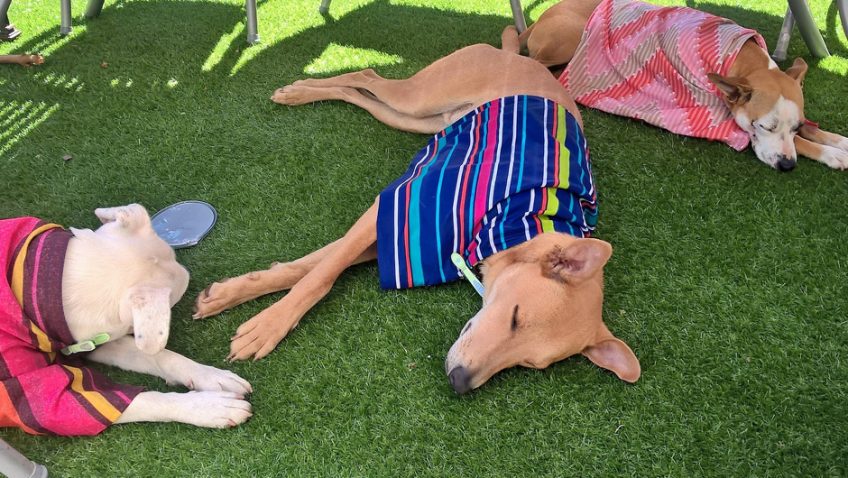Pet advice from Helen Jenkins
Hyperthermia in dogs is most common during summer months due to exposure to a high temperature without access to ventilation and drinking water. Dogs struggle in high temperatures as they are unable to cool down quickly through sweating, rendering them vulnerable to overheating. This typically occurs in a parked car, a garden with no shade, or a very hot room. Despite publicity campaigns, dogs still die of heatstroke every summer where it can take as little as 15 minutes to succumb to in hot cars or as a result of overexertion on walks and day trips.
Dogs at risk of heatstroke:
- Overweight or obese
- History of heart related illness
- Brachycephalic breeds (upper airway abnormalities typically affecting flat-faced breeds such as pugs and bulldogs)
- Very old or young dogs
- Dogs with thick, heavy coats or long hair
- Dogs with certain diseases or on some types of medication
- Extremely active dogs and working or hunting breeds are also at a higher risk, especially during warm months. You should be careful to not push these dogs too hard, so make sure they get plenty of breaks to rest in the shade and that they are well-hydrated at all times.
- Environmental factors – All dogs are at increased risk of overheating if they are not given adequate shade or another cooler place to relax indoors. Dogs left in a hot car are in serious danger of heat exhaustion and heat stroke.
 Warning signs of heatstroke:
Warning signs of heatstroke:
- Faster, heavier panting
- Barking, whining or signs of agitation
- Excessive thirst
- Excessive drooling
- Increased pulse and heartbeat
- Dark-coloured (red or purple) gums or tongue
- Glassy eyes
- Elevated body temperature (39.5°C and up)
- lethargy, uncoordinated, weakness or collapse
- Seizures
- vomiting or diarrhoea
- Unconsciousness
Avoiding Heat Exhaustion in Dogs
Get dogs fit before the heat, an overweight dog finds it harder to cool down. If your dog has long hair or a thick coat, consider cutting the hair to get through the hot months—just be sure to leave enough fur to protect the skin from the sun. Walk early in the morning or later in the evening (keep in mind hot tarmac and pavement can burn footpads) or exercise with swimming or provide a sprinkler. Apply pet sun cream to dogs in areas that may be exposed to sunlight, such as the nose, belly, ears and groin. Pets that are sparsely haired, hairless, have unpigmented skin or have previously undergone radiation therapy are at a higher risk of sunburn.
Emergency First Aid for dogs
The best chance of survival is to recognise the signs; dogs suffering from heatstroke urgently need to have their body temperature lowered gradually. Immediate action must be taken to preserve life.
- Seek a cooler area either indoors/shaded/cool well-ventilated area/fan.
- Check rectal temperature (if elevated cool your dog and go to your veterinary practice immediately).
- Immediately cool your dog by splashing them with cool (not cold) water, to avoid shock. Use wet towels/sponge on neck, armpits, between hind legs, ears and paw pads or place him/her in the breeze of a fan.
- Do not cover a hot dog as this traps in the heat and prevent the dog from cooling.
- Allow the dog to drink small amounts of cool water, no ice cubes.
- Continue to splash the dog with cool water until breathing starts to settle but avoid shivering.
- Once the dog is cool, take him/her to the nearest veterinary practice as a matter of urgency.
According to one study into heat-induced illness in dogs, those actively cooled before arriving at the vets had a lower mortality rate (19%) than those not cooled prior to arrival (49%). Please do not do this without veterinary advice.
Treatment of heatstroke is focused on reducing the core body temperature, supporting cardiac function, replacing fluid and electrolytes and addressing any other complications that are present or arise (some may be delayed, occurring 48 hours to 72 hours post-presentation).
It is recommended cooling is implemented as soon as possible and immersing or spraying the animal with cool water can do this.
Freezing water should be avoided, however, as this causes the centre of the body to seal in the heat (peripheral vasoconstriction) and actually impairs heat loss. Body massage can also aid heat loss. A target body temperature is usually around 39°C (102°F).
The British Small Animal Veterinary Association advise to keep dogs safe as the temperature rises:
- Don’t leave dogs in vehicles
- Make sure dogs always have adequate water to drink
- Provide adequate ventilation at all times
- limiting exercise or outdoor activity on excessively hot or humid days or at heat of the day
- Provide shade from the sun in the hottest part of the day
- Watch out for early signs of heatstroke, such as heavy panting
- Contact a vet immediately if the animal does not respond to efforts to cool it down
Leaving the car windows open and a bowl of water is not enough. As a dog can only cool down through its tongue and paw pads, it cannot react quickly enough to cope with the rapidly rising heat inside a car. On mild days with temperatures in the 20s, the inside of a parked car can reach 50°C in minutes, making this an extremely dangerous environment to leave your dog, even for a short time.




